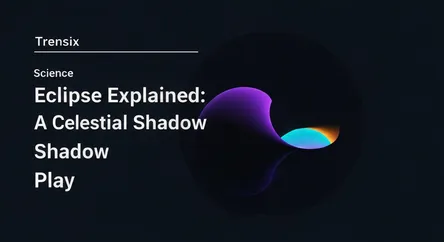Science
Eclipse Explained: A Celestial Shadow Play

What is an eclipse? Discover how celestial bodies align to block light, creating spectacular solar and lunar events visible from Earth.
What is it?
An eclipse is an astronomical event that occurs when one celestial body, such as a planet or moon, moves into the shadow of another celestial body. The two most common types viewed from Earth are solar and lunar eclipses. A solar eclipse happens during the day when the Moon passes between the Sun and Earth, casting a shadow on Earth and blocking the Sun's light. A lunar eclipse occurs at night when Earth passes directly between the Sun and Moon, casting its shadow over the Moon and often giving it a reddish hue.
Why is it trending?
Eclipses become major trending topics whenever a significant event, particularly a total solar eclipse, is visible to a large population. The rarity and breathtaking beauty of totality—the brief period when the Sun is completely obscured, revealing its ethereal corona—captures public imagination. Media coverage, social media sharing, and dedicated travel by 'eclipse chasers' to prime viewing locations amplify the buzz. Major eclipses, like the 2024 total solar eclipse over North America, become massive cultural and scientific events.
How does it affect people?
Historically viewed as omens, eclipses now inspire awe and a sense of cosmic connection. They significantly boost tourism in areas along the path of totality, impacting local economies. For scientists, they provide rare opportunities to study the Sun's corona and test theories of physics. For the public, eclipses are major educational events, bringing communities together for shared viewing parties and fostering a greater interest in astronomy and the natural world. They serve as a powerful reminder of the precise, predictable mechanics of our solar system.